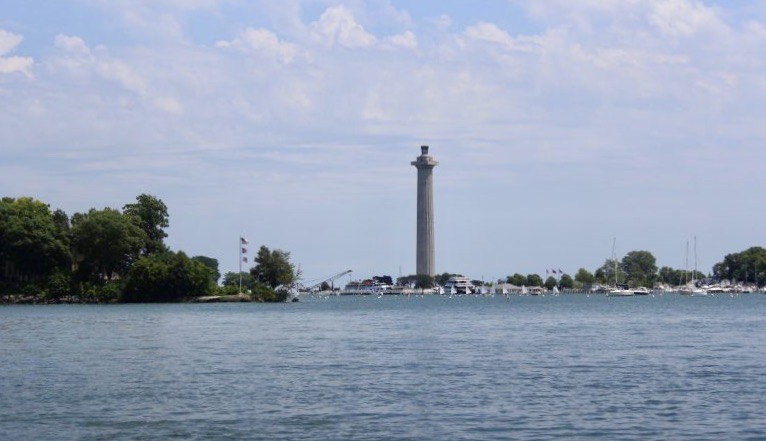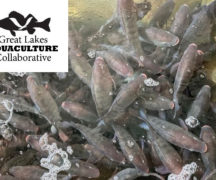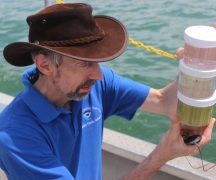Ohio Sea Grant, Stone Lab and education partners across South Bass Island will host Lake Erie Awareness Day on Aug. 10 from 10 a.m. to 4 p.m. at the Aquatic Visitors Center, Perry’s Victory and International Peace Memorial, Cooper’s Woods Preserve, Lake Erie Islands Nature and Wildlife Center, South Bass Island State Park, and South Bass Island Lighthouse.
This free, family-friendly event will highlight the cultural and historic significance of the islands, address pressing environmental issues such as aquatic invasive species and plastic pollution, draw attention to land conservation efforts, showcase island wildlife, and create more awareness of aquaculture and safe and clean boating programs. Island residents, families, and visitors are encouraged to attend. More information about the event, including station locations, is available here.
The event is hosted by a partnership between Ohio Sea Grant, Stone Laboratory, Ohio Clean Marinas Program, Ohio Department of Natural Resources, Ohio Clean Marinas Program, Lake Erie Foundation, Great Lakes Island Alliance, National Park Service, H2Ohio, Lake Erie Islands Nature and Wildlife Center, Eriesponsible, Lake Erie Islands Conservancy, and Put-in-Bay Chamber of Commerce. Funding support comes from the Center for Great Lakes Literacy and donation of island maps comes from Put-in-Bay Official Tourism Bureau.
“We are very excited to be hosting the third annual Lake Erie Awareness Day. Each year the event grows and improves,” says Jill Bartolotta, Event Coordinator and Extension Educator with Ohio Sea Grant. “I look forward to this event all year as we welcome residents and visitors to our day of fun, education, and stewardship. Thank you to the many education partners who help make this day possible.”
A special treat for this year’s event will be trash removal technology demonstrations using Pixie Drone. The Pixie Drone is a floating, remote-controlled, mobile waste collector. The Pixie Drone targets floating waste in all forms: organic, plastic, glass, metal, paper, rubber, etc. This drone can be operated in salt, fresh, and brackish waters.
Since April 2022, Meijer has donated $1.5 million to The Council of the Great Lakes Region’s (CGLR) charitable arm to clean up Midwestern beaches and waterways with the purchase and use of the BeBots and Pixie Drones. In August 2022, Meijer officially launched its participation in the Great Lakes Plastics Cleanup Program with the use of the two innovative technologies. The retailer’s initiative supports the single largest deployment of these types of eco-friendly and remote-controlled devices across multiple states in the Great Lakes.
The Ohio Sea Grant College Program is part of The Ohio State University’s College of Food, Agricultural, and Environmental Sciences and NOAA Sea Grant, a network of 34 Sea Grant programs dedicated to the protection and sustainable use of marine and Great Lakes resources.
About Council of the Great Lakes Region
The Council of the Great Lakes Region is a binational network of organizations comprised of: (1) the Council of the Great Lakes Region USA, an Ohio-based trade association; (2) the CGLR Foundation, an Ohio-based public charity; and the Council of the Great Lakes Region Canada, a not-for-profit corporation. Together, these organizations, collectively referred to as the Council of the Great Lakes Region, are leading a new era of economic growth, environmental protection, and individual well-being by building the region’s long-term competitiveness and sustainability today.
About the Great Lakes Plastic Cleanup
The Great Lakes Plastic Cleanup, an initiative of the Council of the Great Lakes Region and Pollution Probe with support from a network of funders and collaborators, uses innovative plastic capture technology to quickly capture and remove plastics and other litter from Lake Ontario to Lake Superior and everywhere in between and is one of the largest initiatives of its kind in the world. Through research, outreach and education, the Great Lakes Plastic Cleanup is gathering data on litter entering our waterways and identifying how government, industry, and consumers can work together to reduce, reuse and recycle material waste.
South Bass Island hosting Lake Erie Awareness Day



